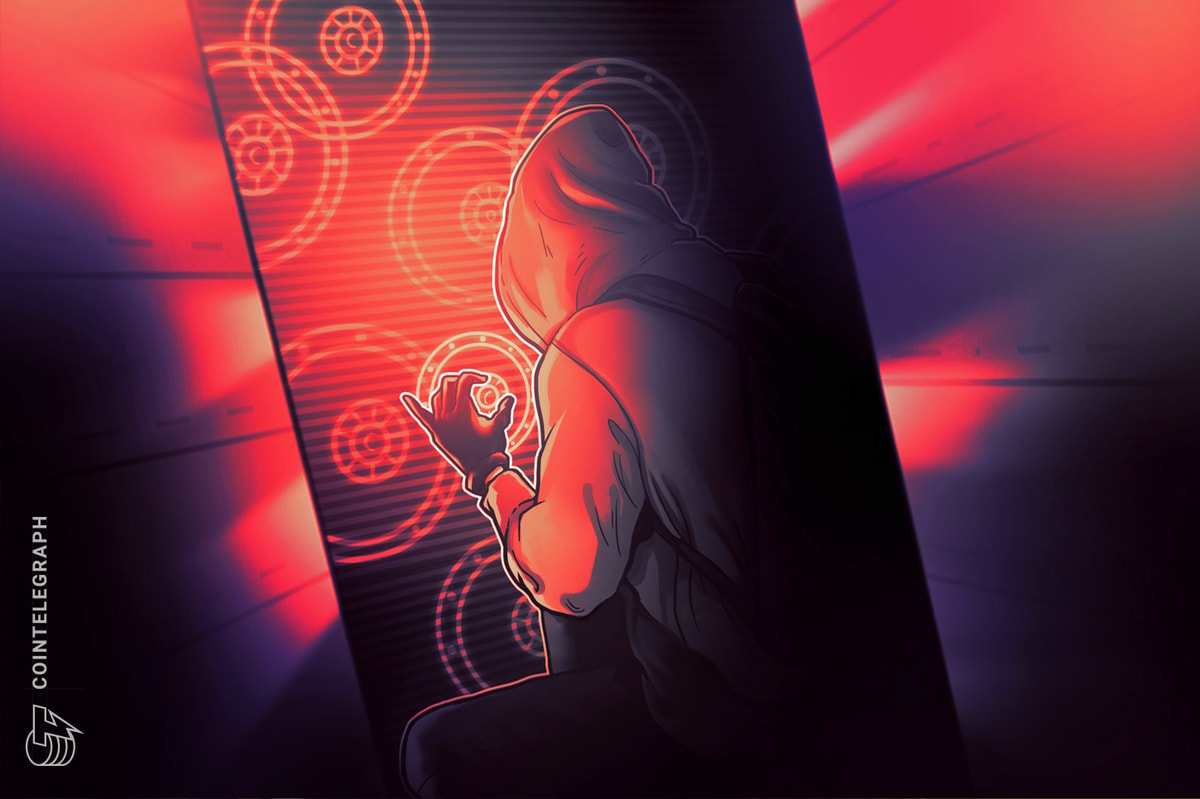
Satoshi’s Games is here to integrate the Lightning Network into a multi-billion dollar industry.
Though Bitcoin’s second layer is mostly appreciated for its speed and scalability, it also helps enable some interesting smart contract functions. In this regard, the intricate microtransaction features have inspired enthusiasts to work on Lightning applications (LApps) that disrupt everything from content monetization (with Y’alls and LNCast) to privacy-friendly text messaging (like LnSMS and Receive SMS).
Though these early applications mostly serve as proof-of-concept prototypes that lack the user friendliness of their centralized fiat-friendly counterparts, they are still great starting points. They help create new ways to circumvent the rules and conventions of the old world. Through them, privacy and sovereignty are magnified like never before, and it’s only a matter of time until the snowball effect brings them to mainstream attention.
During her panel at the Magical Crypto Conference, Lightning Labs CEO Elizabeth Stark praised the bourgeoning development of LApps by emphasizing the most fundamental quality that sets them apart from similar altcoin DApps: the quick growth of the user base, which speeds up adoption.
“Development has been astounding, I didn’t expect this to happen so quickly,” she said. “One of the things I’m super passionate about is people building on top of Lightning. I think in these other communities it’s all like ‘developers, developers, developers‘ while nobody’s using the Dapps. On Lightning it’s been incredible: people are using this, they’re engaging with it, they’re interacting with it.”
And since the pace of development on Lighting often exceeds the amount of information one can process at a time, it’s important to point out the gems that shine among Lightning applications. Furthermore, this type of scrutiny might lead to the discovery of a “killer app” that the entire Bitcoin space needs. Hopefully, at least one of the projects presented in this review will catch the attention of mainstream audiences in order to reverberate the thunder that comes with Lightning.
Satoshi’s Games
If we assume that former Atari video game programmer Hal Finney was the person behind the Satoshi Nakamoto pseudonym, then it’s likely that the Bitcoin creator also developed pixelated art similar to the content available on Satoshi’s Games.
In a nutshell, Satoshi’s Games is the Lightning-friendly equivalent of flash game websites such as Miniclip, Pogo and Newgrounds. It features a collection of simple yet addictive titles which mostly emulate the mechanics of games like Super Mario World, Minecraft, The Legend of Zelda, Bejeweled, Agar.io and Flappy Bird.
“Satoshi’s Games is special because it brings back memories to gamers,” Satoshi’s Games developer Carlos Roldan (@whiteyhat) told Bitcoin Magazine. “Retro arcade games aren’t as common or popular these days. And if you combine these nostalgic video game elements with the Bitcoin and Lightning environment, you get a match made in Heaven that the developers from the 1980s and 1990s could only dream of.”
The novelty of this LApp emerges once you’re asked for an admission fee of 1,000 satoshis. If you’re unwilling to pay and would rather try some freebies, you can immerse yourself in the story of the text-based adventure “The Legend of Satoshi” (a clear throwback to the old days of Atari, Amiga and Commodore 64), test your survival skills in “BCraft” (a 2D top-down version of Minecraft, with some interesting forging options), or explore an alien planet in “Low Mem Sky.” Unfortunately, these are the only Bitcoin-themed games available, as the other two (the frantic “Skulldude” and the Golden Axe-inspired “The Lair”) haven’t received any kind of narrative or visual adaptation to suggest a relation to Satoshi Nakamoto.
Having Fun Isn’t Hard When You Have a Thousand Satoshis Card
The real fun begins as soon as you pay the 1,000 sats and explore the benefits of being a true member. (Just take into account that this isn’t investment advice and it’s likely that you will regret spending your BTC fractions whenever hyperbitcoinization arrives. Nonetheless, what you do buy helps to support a small team of developers who have put a lot of time and work into this project.)
Interestingly, the required microtransaction can be made by using your Lightning wallet, the Joule browser extension or the Blockstack universal login. It’s remarkable to see LApps become interconnected by offering support for one another, and this kind of collaborative approach will only help the entire wave of technological innovation grow.
It only takes a few seconds to make the microtransaction (whose valuation at the time of writing is 11 cents), and once you become a true member, a retro-looking dashboard greets you. Here, you can set your nickname, purchase a different user avatar or become a premium supporter with voting rights and access to tournaments (more on that later).
You can definitely spend some satoshis on customization, but if you’re anything like me, you will be anxious to explore the offering of premium games. From a quantitative perspective, you probably won’t be impressed: you only get a bitcoin mining-themed Bejeweled clone, a frantic game of Flappy Bird where you avoid pixelated forks, an adaptation of Super Mario World where Satoshi Nakamoto replaces Princess Peach and a competitive version of Agar.io in which you win or lose sats depending on how well you do.
The charm doesn’t come from the presentation or technical implementation, but from the novel perspective. In two of the games listed, being a good player will help you earn satoshis. And since they provide disparate features and mechanics, they are most likely the best reason to pay for membership (and I happen to have spent a lot of time playing them, so they will receive individual sections).
Super Bro: A Mario Clone Where 1 Coin = 1 Satoshi
Like many of you reading this, I grew up playing Super Nintendo games. In this regard, Super Bro is a great throwback which features some textures, backgrounds and animation techniques that will send you back to your days of playing Super Mario World.
Conceptually, the game is very simple: You complete all of the levels, save Satoshi and every coin you collected during your adventure will be sent to your wallet as 1 sat. I must have spent more than 20 hours playing the game while listening to music and, during that time, I earned about 20,000 satoshis.

Super Bro features a male protagonist who bears a striking resemblance to Casa CEO Jeremy Welch. It takes you through a randomized journey which generates levels of varying difficulty. Sometimes, your game will be as simple as a walk in the park. At other times, you will face an army of goombas that’s only divided by a multitude of deadly pitfalls.
This Super Mario World adaptation is fun and addictive — plus, you have a strong financial incentive to return to it every day. You’re basically stacking sats during your breaks, and it’s easy to earn back the 1,000 satoshis entrance fee. As a matter of fact, it’s easy to imagine that citizens of developing countries might find a source of revenue in Super Bro, just like some players still farm gold in World of Warcraft. The main difference is that BTC units are scarce and might become much more valuable in time.
However, the game isn’t all milk and satoshis. The controls are a lot worse than the ones you find in the 1991 Nintendo original, the jumping mechanics can sometimes be your greatest enemy and the variety of levels will get boring pretty fast. But while Super Mario World is a lot more entertaining than Super Bro, it isn’t built on a cutting-edge payment system which offers you financial rewards. There are always trade-offs.

Lightning Agar
As metaphorically presented on the Netflix hit show “House of Cards,” Agar.io is the online multiplayer adaptation of “Feeding Frenzy.” It borrows the “big fish eats the smaller fish and gets bigger” mechanic but transfers it to round particles that move around a large world map.
Conversely, Lightning Agar is a challenge where you must pay 1,000 satoshis from your wallet regardless of your membership status. If you happen to eat another player, then you will be rewarded with 750 satoshis — so if your purpose is to earn some valuable BTC fractions, you should amass at least two of the players on the map.
From a technical point of view, there’s nothing different between Agar.io and Lightning Agar. The only major two major differences are popularity (the free-to-play version is much more popular, with hundreds of players competing at all times) and the financial incentive (which is more an issue of adoption and growth). Once people learn about the neat features of this LApp, they will definitely become more willing to take the extra challenge that can reward their skill with some money.

I’ve spent about an hour in Lightning Agar at a time when only two other players were around. Soon enough, I eliminated one of them and ended up eating so many colored dots that I became an unstoppable whale. Given its multiplayer nature, the game is pretty dull when you have no competition. You can end up occupying 25 percent of the game map, but you will crave the challenge and thrills. To me, it was an interesting lesson about capitalism and the need for competition (at one point, I was purposely dividing to help other players eat smaller parts of me and get bigger).
The Premium Features
If Satoshi’s Games becomes somewhat of a daily habit and you want to take your relationship to the next level, then you may be interested in paying 500,000 sats extra for the premium account. It will turn you into a first-class citizen of the realm by granting you voting rights on future developments and allowing you to join tournaments where you can earn even more satoshis.
Also, you receive many more customization features which set your user profile apart from all the others. You provide a greater amount of support to the developers, and, in exchange, you are rewarded with bragging rights.
Furthermore, in Super Bro you will begin each game with three extra lives (which otherwise cost 500 satoshis each), a boost of 1,000 satoshis to your score and a double multiplier on the gold coins you collect. If you would usually earn 500 satoshis by the end of your journey of saving Satoshi, now your amount should increase to 2,000. In a way, the investment in your premium account only makes sense if you’re willing to put in a lot of time playing the LApps.
The Verdict
Satoshi’s Games isn’t meritorious because of the individual games that build the experience. The collection of LApps earns its place in the spotlight thanks to the complex platform it offers, the interesting financial incentives that players have, and the willingness to integrate other applications such as Joule and Blockstack.
There’s enough content to please every lover of retro video games and plenty of reasons to return every day and experience a throwback to the early 1990s. Also, the polls indicate that there’s a lot more content coming and the community actually gets to decide the priorities of developers.
The collection of LApps definitely isn’t perfect and has some rough parts that can be polished. However, when you’re in the middle of a game of Super Bro or Lightning Agar, you will find enough enjoyment to forget about some bugs that need to be fixed. There’s also an efficient error-reporting system which I’ve found to be quite responsive: I’ve also exchanged some messages with the developers in order to provide feedback. Needless to say, the time I spent testing the LApps has been beneficial for both sides: I’ve earned some sats, and the platform has gotten noticeably better.
Gaming is also a multi-billion dollar industry that can benefit from the integration of fast, secure and private payments. It would be nice to have at least one LApp among the big names, but, ultimately, the success of projects such as Satoshi’s Games depends directly on our involvement as a community. We vote with our time and satoshis, and the dynamics of the industry shift accordingly.
“We want to BUIDL a more scalable platform which allows us to supply the high demand we have from video game developers who want to add their work to Satoshi’s Games,” said Roldan. “Also, we just added our project to Product Hunt and could really use some community help with upvotes. Your feedback can radically impact our future in a very positive way.”If you have time to give these platforms a try, you should definitely do so. For the price of feeding chickens or changing the display of a live clock, you can have some fun for a longer time and eventually get a return on your investment.










